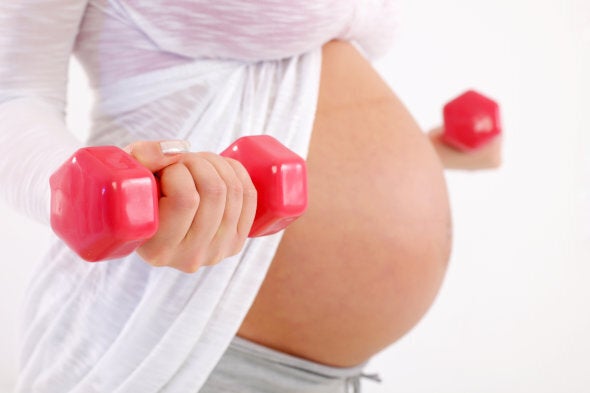
Getty
If you had a complete aversion to exercise – or a redundant gym pass languishing in the bottom of your bag – before you fell pregnant, being 'with child' might seem like the perfect excuse to put your feet up and take it easy for a while. On the flipside, if you're a dedicated fitness fanatic, you might be worried about giving up your treasured regime in light of your current condition.
But in fact, keeping fit during pregnancy is more important than ever. From the early days of fatigue and morning sickness right through to the 'carrying a watermelon' stage, however counter-intuitive it might seem, a little exercise will do wonders for your physical and emotional wellbeing, as well as preparing your body for the birth.
But before you start swinging from the monkey bars or signing up for a triathlon, remember that your body is going through an immense change and your workout will need to take those changes into consideration.
First Trimester
"Continuing to exercise, even weight training, through early stages of pregnancy will help you physically and mentally deal with the changes in your body. It will also help you combat tiredness and the symptoms of morning sickness," says LA Muscle sponsored trainer, Rachel Turner.
"However, don't try and go for personal bests or go breaking any power lifting records. Keep to your regular routine, maybe lower intensity or impact. Remember to listen to your body," she warns.
Similarly, beware of 'too much, too soon' if you're out of practice. "If you are thinking of starting an exercise regime and have never exercised or haven't exercised in a while, you should consult your GP or midwife," advises Rachel.
"During the first trimester, your blood vessels expand to supply sufficient oxygen to the baby," explains Paul Edmondson, Fitness and Nutrition Lecturer and Trainer at Premier Training International.
"The problem is the blood supply remains the same at this stage so the blood moves more slowly through these wider vessels where previously it was pumped along quickly. This is known as vascular underfill and can leave you feeling tired and nauseous or light-headed if you get up too quickly."
To fight the effects of vascular underfill Paul suggests: "Keep hydrated before, during and after exercise, take plenty of break and don't train if you feel over tired – listen to the body, it's a sign to rest."
Second Trimester
"Although you will be feeling well and little more energetic you will notice your bump growing and weight creeping on," says Rachel. "Exercise is a great way of keeping your weight down and to feel great."
You'll be pleased to hear your body should have adjusted to vascular underfill by this stage. Paul explains: "The blood volume and pressure and heart rate have now normalised so your energy levels should be higher."
The major change in trimester two is the introduction of the hormone, relaxin, into the body. "This aids joint relaxation to enable mum to take the stress off the joints and ligaments while giving birth. The downside is a lack of joint stability making mum more vulnerable to breaks and fractures," adds Paul.
To help prevent injuries, Paul suggests avoiding heavy weights and high impact exercises at this stage.
Third Trimester
"During your last trimester you may want to take up a more gentle exercise regime. I recommend swimming for pregnant women," says Rachel. "I swam and took part in aqua aerobic classes whilst pregnant with all three of my children. This form of exercise is great for all three trimesters of pregnancy. It's easy on joints, gentle on baby bump and a relaxing, refreshing way to stay in shape."
5 reasons to practise yoga during pregnancy
If the thought of hitting the gym is enough to make you want to lie down in a darkened room, why not find an exercise that incorporates, well, lying down in a darkened room? A gentle alternative that offers so much more than maintaining your fitness levels, yoga can help prevent a number of physiological issues during pregnancy as well as reducing stress and helping you to relax during the birth.
Cheryl MacDonald, yoga teacher and founder of YogaBellies, explains the key benefits of practising yoga during pregnancy.
1. Pregnant women typically shift their pelvis forward in response to the increased weight, which places significant strain on the lower back. Yoga strengthens the core muscles, resulting in better posture and alleviated back pain.
2. Yoga strengthens the muscles used in delivery, which will make the entire process easier and less painful.
3. Pregnancy can shift the position of the digestive organs, impeding digestion and causing unwanted side effects. Yoga can help reverse this process and restore healthy digestion.
4. Practising yoga will build muscle mass, which will give you more energy and make your pregnancy easier. It will also make it easier to lose the weight you put on while you're pregnant.
5. One of the most important benefits of yoga for a pregnant woman is the practice's focus on breathing. Concentrating on breathing properly will teach you to relax your mind and your body, even in frightening or high-stress situations, helping your pregnancy to develop healthily.